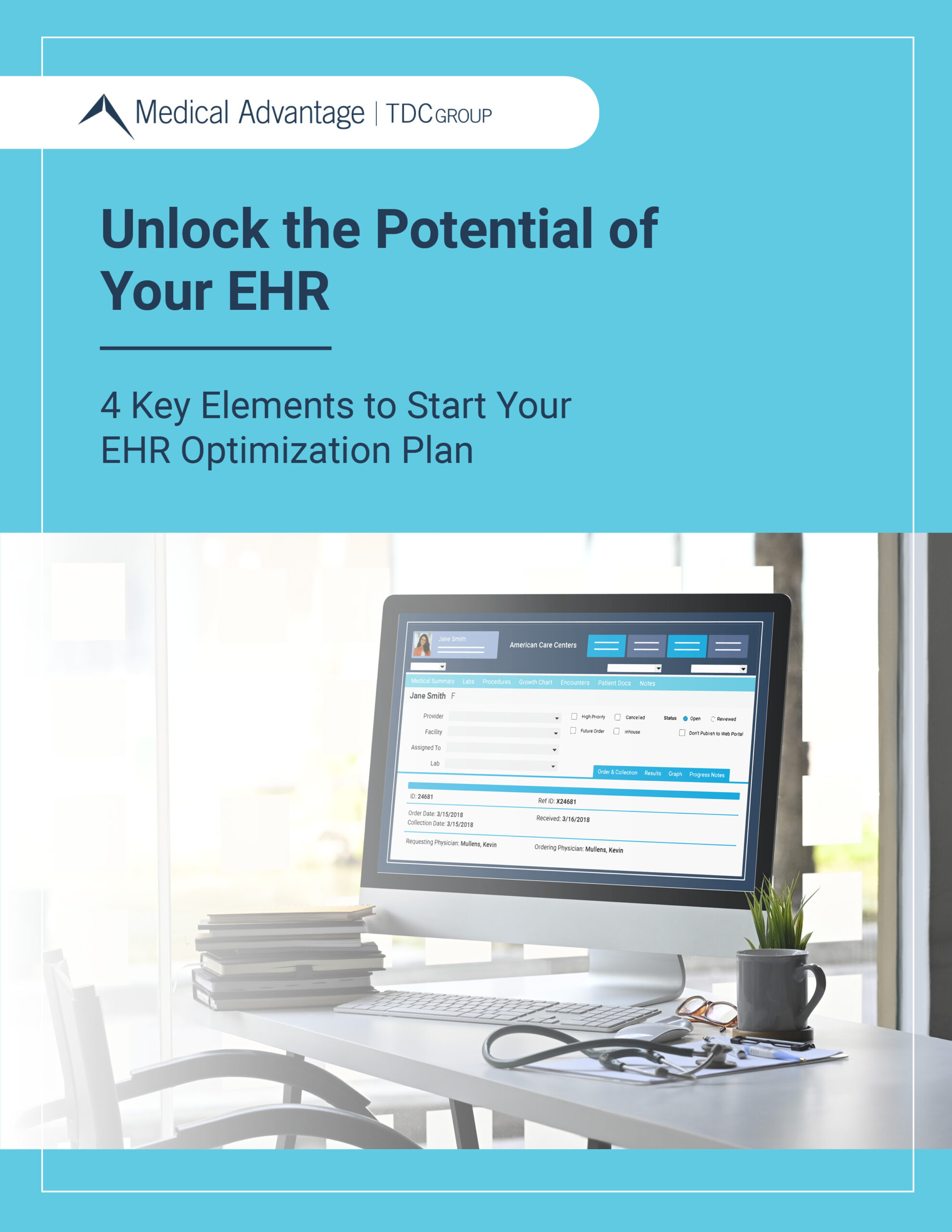EHR Optimization| Get More From Your EHR
Move Beyond the Status Quo and Modernize with EHR Optimization
For far too long, medical professionals have tolerated the tedious EHR quirks and flaws. When changing to a new EHR is out of the question, what else can you do? In many cases, the EHR can do what you need it to do, it just needs some adjustments along with additional training.
Transform your EHR system from a continuous hindrance to a helpful asset with EHR optimization services – a cost-effective solution that maximizes EHR performance.

EHR Optimization | Get More From Your EHR
Move Beyond the Status Quo and Modernize with EHR Optimization
For far too long, medical professionals have tolerated the tedious EHR quirks and flaws. When changing to a new EHR is out of the question, what else can you do? In many cases, the EHR can do what you need it to do, it just needs some adjustments along with additional training.
Transform your EHR system from a continuous hindrance to a helpful asset with EHR optimization services – a cost-effective solution that maximizes EHR performance.
Start Getting More out of Your EHR Investment Today

EHR Optimization Starts with a Strategy
EHR optimization is a lot like flipping a house – you take an as-is property with a list of issues and tackle them one by one as it transforms into a desirable environment. Imagine the time savings, improved care quality, and revenue gains you would gain from a better EHR.
Optimization strategy starts by recognizing how much an inefficient and faulty EHR costs your organization – especially burnout – every year that goes by. It is time for a change.
Get the EHR optimization solution to unlock the full efficiency potential of your EHR – a central component of your practice operations.
Common Challenges Resolved by EHR Optimization
Our comprehensive EHR optimization services are designed to transform your EHR system into a powerful tool that supports, rather than hinders, your daily operations. Our tailored solutions will transform your EHR, leading to a more efficient, effective, and satisfying healthcare experience for providers, staff, and patients.
Streamlined Workflows and User Experience Enhancement
Our EHR optimization services work to eliminate excessive clicks, redundant alerts, and inefficient processes. By tailoring the user experience to each role by implementing templates, and auto-filled forms, we streamline daily workflows.

Improved Documentation and Interoperability
With customized templates, voice dictation, and handwriting-to-text conversion, our optimization tactics simplify documentation. Enhancements in clinical decision support tools minimize work fatigue and errors, while interoperability advancements facilitate easier record sharing among clinicians, contributing to increased operational efficiency.
Enhanced Patient Engagement and Satisfaction
Recognizing the critical role of patient engagement in care quality performance, our EHR optimization services focus on resolving portal issues and integrating features that encourage a patient’s active involvement. By addressing existing complaints and enhancing the portal’s functionality, we help improve the overall patient experience, which is key for fostering patient loyalty and producing better outcomes.
Accurate Reporting and Financial Operations Improvement
Inaccurate reporting can have a detrimental impact on operations and financial performance. Our EHR optimization provides the infrastructure for more accurate reporting, coding, claims processing, and revenue cycle management, ensuring efficiency. This not only supports better operational decision-making but also promotes financial stability by averting costly errors, wasted resources, and inefficiencies.
About Our EHR Optimization Services
EHR Feature Review & Optimization
We dive deep into your current EHR system to identify underustilized features and areas for improvement. Our experts then tailor these features to better suit the needs of your team, enhancing overall efficiency and user satisfaction.
EHR Best Practices Training
Our team of EHR experts offers comprehensive training sessions designed to instruct your staff on the most effective ways to utilize your EHR system. This ensures that everyone is making the most of the system’s capabilities, leading to improved workflows and better patient care.
Patient Portal Optimization
We focus on elevating the functionality and user-friendliness of your patient portal. By doing so, we aim to increase patient engagement and satisfaction., Making it easier for them to access their health information, schedule appointments, and communicate with healthcare providers drives better care outcomes through increased patient participation.
Maximizing Reimbursement & Incentive Income
Our support services include strategic guidance and practical action plans to ensure you are fully leveraging your EHR system for optimal reimbursement and taking advantage of available incentive programs. This approach helps to maximize your revenue and maintain financial health.
Reviewing And Implementing Automation
We assess your current processes to identify opportunities for automation within your EHR system. Implementing these automations can significantly reduce manual tasks, cut down on errors, and increase staff satisfaction.
Streamline Office Workflow
Our optimization efforts extend to streamlining your office workflows for maximum efficiency and effectiveness. By aligning your EHR system’s capabilities with your daily operations, we help create a smoother, more productive working environment for your staff that empowers them to provide a better experience for your patients.
Flexible Timing
Flexible Engagements

Revitalize Your EHR With Medical Advantage Experts
Partnering with Medical Advantage to improve your EHR will establish a long-term management solution for your practice or organization with the added benefit of a seasoned medical approach to technology. We’ve spent two decades working with physicians and practices to help improve patient care quality, administrative efficiency, sustainable profitability, and regulatory compliance. Take the next step in getting the most from your EHR and reach out to a consultant today!











